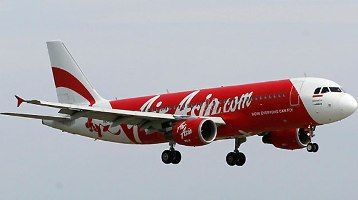The region is in the intertropical convergence zone, known for thunderstorms, which pilots are advised to avoid.
 The disappearance of an Indonesian AirAsia Airbus A320 plane has again brought to focus the issues of pilot training, aircraft communication and flight tracking systems.
The disappearance of an Indonesian AirAsia Airbus A320 plane has again brought to focus the issues of pilot training, aircraft communication and flight tracking systems.
Initial reports say the pilots had asked for a change in route (it was flying to Singapore) because of adverse weather.
The region is in the intertropical convergence zone, known for thunderstorms, which pilots are advised to avoid.
The impact can include reduction of aircraft performance and in severe turbulence.
Other possibilities include lightning-induced electrical malfunction, icing on engines and wings, and structural failures from severe turbulence.
"Pilots in India are trained for stall recovery procedures and these are practiced on simulators. A thunderstorm tests a pilot’s abilities. In a simulator, a pilot gets a second chance.
In a real situation, there is no action replay," said a senior captain with a private airline.
The other aspect is flight tracking and communication systems. Most new planes are equipped with an Aircraft Communication Addressing and Reporting System.
This sends messages about various parameters such as height, speed, engine performance and so on to the airline engineering department through a digital data link system.
The conventional systems for communication and tracking include VHF and HF radio and radars.
“Systems like ACARS are designed for monitoring aircraft health. These are not designed to prevent sabotage,” said an aviation source.
After the disappearance of a Malaysian Airlines plane over the Indian Ocean earlier this year, the Directorate General of Civil Aviation in India directed all airlines to ensure aircraft were equipped to communicate with ACARS or an Automatic Dependent Surveillance–Broadcast.
The latter is used mostly when flying over oceans.
Aviation sources say this instruction of the regulator is largely advisory in nature, and serviceability of ACARS or ADS-B equipment is not checked before each flight.
Representative image. Photograph: Reuters












 © 2025
© 2025